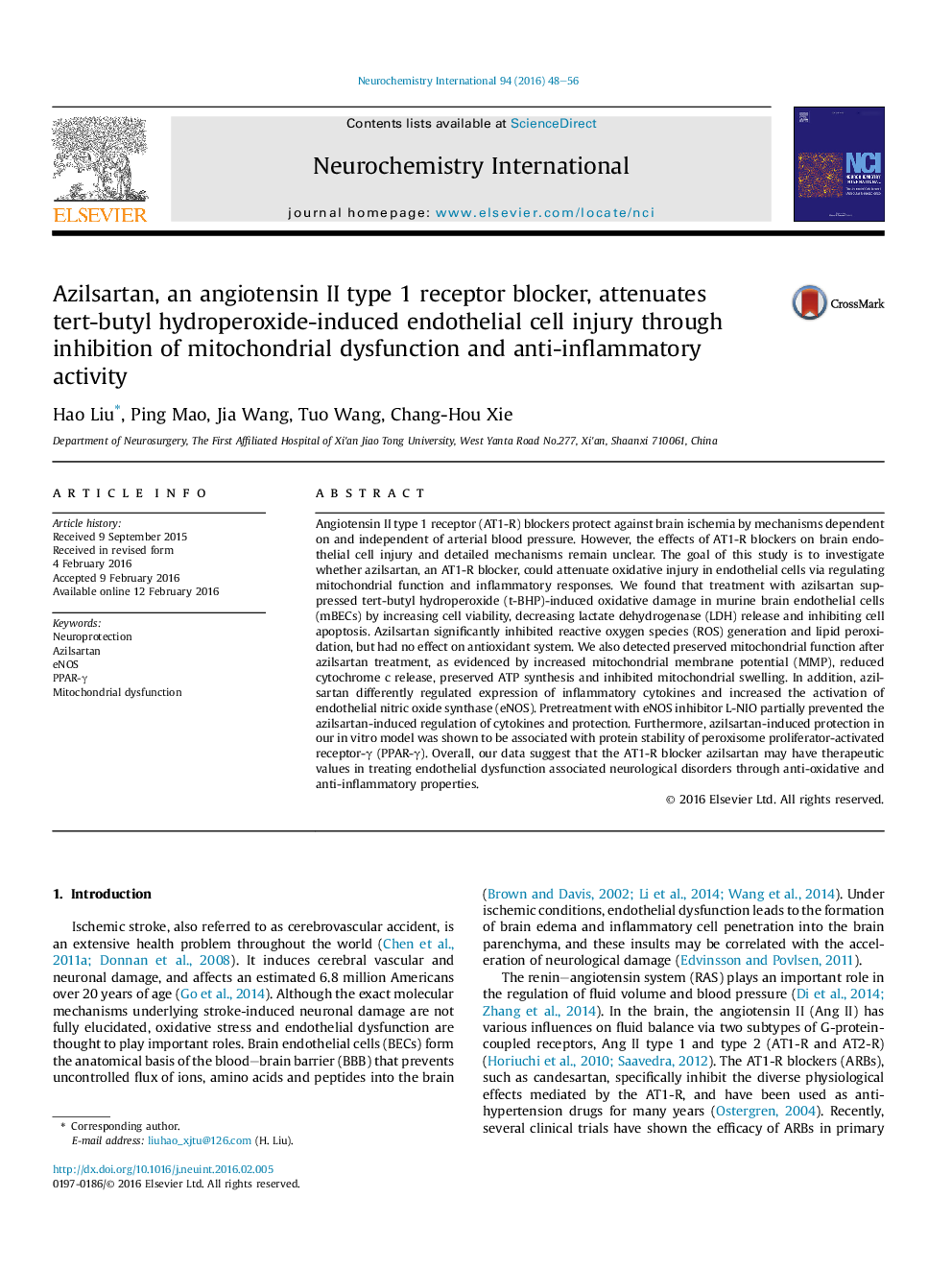| کد مقاله | کد نشریه | سال انتشار | مقاله انگلیسی | نسخه تمام متن |
|---|---|---|---|---|
| 2200357 | 1551281 | 2016 | 9 صفحه PDF | دانلود رایگان |

• Azilsartan attenuates t-BHP-induced toxicity in mBECs.
• Azilsartan inhibits t-BHP-induced oxidative stress and mitochondrial dysfunction.
• Azilsartan exerts anti-inflammatory activity through eNOS activation.
• PPAR-γ activation may contribute to Azilsartan-induced protective effects.
Angiotensin II type 1 receptor (AT1-R) blockers protect against brain ischemia by mechanisms dependent on and independent of arterial blood pressure. However, the effects of AT1-R blockers on brain endothelial cell injury and detailed mechanisms remain unclear. The goal of this study is to investigate whether azilsartan, an AT1-R blocker, could attenuate oxidative injury in endothelial cells via regulating mitochondrial function and inflammatory responses. We found that treatment with azilsartan suppressed tert-butyl hydroperoxide (t-BHP)-induced oxidative damage in murine brain endothelial cells (mBECs) by increasing cell viability, decreasing lactate dehydrogenase (LDH) release and inhibiting cell apoptosis. Azilsartan significantly inhibited reactive oxygen species (ROS) generation and lipid peroxidation, but had no effect on antioxidant system. We also detected preserved mitochondrial function after azilsartan treatment, as evidenced by increased mitochondrial membrane potential (MMP), reduced cytochrome c release, preserved ATP synthesis and inhibited mitochondrial swelling. In addition, azilsartan differently regulated expression of inflammatory cytokines and increased the activation of endothelial nitric oxide synthase (eNOS). Pretreatment with eNOS inhibitor L-NIO partially prevented the azilsartan-induced regulation of cytokines and protection. Furthermore, azilsartan-induced protection in our in vitro model was shown to be associated with protein stability of peroxisome proliferator-activated receptor-γ (PPAR-γ). Overall, our data suggest that the AT1-R blocker azilsartan may have therapeutic values in treating endothelial dysfunction associated neurological disorders through anti-oxidative and anti-inflammatory properties.
Journal: Neurochemistry International - Volume 94, March 2016, Pages 48–56